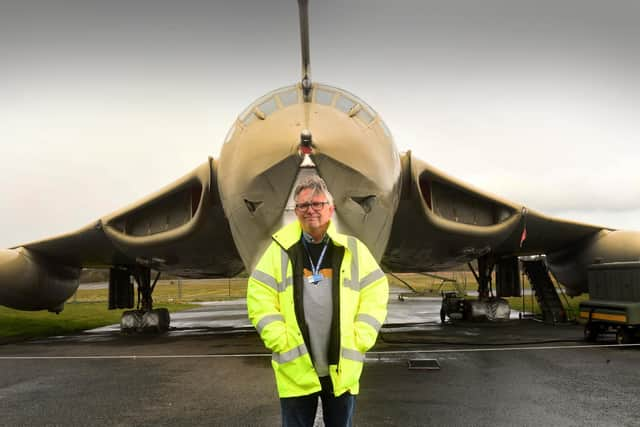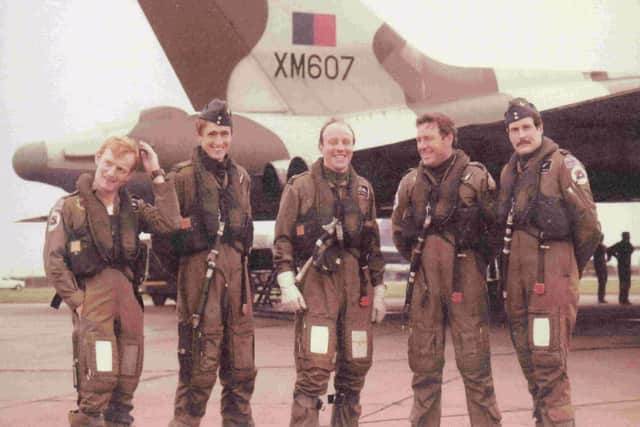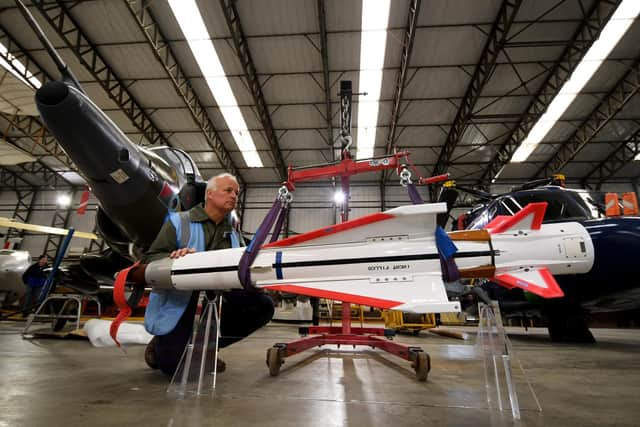Falklands War 40th anniversary: 'One way ticket' Vulcan bombing mission on island runway recalled
The flight lieutenant from Easingwold, now a trustee at Yorkshire Air Museum, and his crew were in reserve to attack Port Stanley’s only runway, but it was a mission fraught with risk, not least because it involved an 8,000-mile trip from Ascension Island in the middle of the Atlantic Ocean to the Falkland Islands and back.
“We saw it as a one way ticket, the aircraft wasn’t equipped for long range flights and navigation was virtually nil,” he said.
Advertisement
Hide AdAdvertisement
Hide AdIn a fascinating interview, part of a Falklands 40th anniversary exhibition at the museum, Martin explained that the lead aircraft had a problem with the window, meaning the cabin couldn’t pressurise.


Suddenly there was just them: “None of the crew uttered a word, we were all in shock, we were all prepared technically, but psychologically we didn’t really think we were going.”
The operation, on April 30 to May 1, 1982, needed 11 Victor tanker planes - one of their type is on show - to refuel the Vulcan mid air, but eventually they were on their own, not daring to fly higher than 500ft for fear they would be exposed to anti aircraft fire.
Just before the attack they climbed to 10,000 feet, saw the lights on at the airfield and let loose 21 bombs - one of which blew a massive crater in the runway.
Advertisement
Hide AdAdvertisement
Hide AdMartin, who was awarded the Distinguished Flying Cross, said modestly many other deserved medals too. But he said the importance of the action was recognised by the Task Force


Commander Sandy Woodward who said knocking out the runway was his first priority - preventing the Argentinians from using it as a forward operating base for aircraft which would attack their ships.
The exhibition brings together some of the main air components of the Task Force - including the all important Harriers, which were vital to the victory.
There was a combined fleet of fewer than 42 Harriers pitted against 180 Argentinian fast jet aircraft.
Advertisement
Hide AdAdvertisement
Hide AdOn show is a Harrier GR3 as well as a Dassault Mirage III and and a Falklands veteran Lynx helicopter.


The Mirages used by the Argentinians were in theory faster and better. But by the end of the conflict, not one Harrier had been lost, while the Argentinians lost 21 aircraft and had started referring to the Harriers as “Muerta Negra” (Black Death) for the swift destruction they wrought.
“We were outnumbered but could fight back by fighting smart,” said museum spokesman Jerry Ibbotson. “The Harriers were brilliant aircraft, with brilliant pilots who thought out what they were doing.
“You can almost draw a parallel between Harriers in the Falkland and Spitfires in the Battle of Britain, in that they almost take on a persona, which is much more than simply numbers and firepower.
Advertisement
Hide AdAdvertisement
Hide Ad“It was British-designed, British-built, the first of its kind, a vertical take off plane - and they went up against ridiculous odds.”
The exhibition aims to educate, honour and inspire -the museum’s motto - and is full of interesting detail.
The aircraft carriers which proved vital should have been scrapped but the Navy “did a classic trick” by naming them anti submarine cruisers or through deck cruisers.
“Now we have two biggest aircraft carriers in the world,” said Jerry. “We learned all sorts of lessons from this.”
Advertisement
Hide AdAdvertisement
Hide AdOne of them was the value of deterrence and to strengthen the islands’ defence a permanent garrison, RAF Mount Pleasant, was established 33 miles from Port Stanley. which is home to between 1,000 and 2,000 British military personnel.
Opened in 1985, it remains the newest purpose-built RAF station - Prince William served as a Sea King pilot there in 2012.
Four Typhoon air defence fighters are currently based there. Falklands Air War starts today and runs until the summer.
Comment Guidelines
National World encourages reader discussion on our stories. User feedback, insights and back-and-forth exchanges add a rich layer of context to reporting. Please review our Community Guidelines before commenting.